Micro / Nano scale manufacturing systems:

The ability to fabricate patterns or structures at micro/nano scale has the potential to enable new class of electronics, diagnostic devices and bio-sensors. A variety of devices can be realized if the system is capable of using polymers, non-polymers, DNA, proteins and other functional materials to fabricate the features at miniature scale. Electrohydrodynamic (EHD) ink jet printing system, which possesses such kind of ability, was developed at SE&T lab and is shown in Figure 1.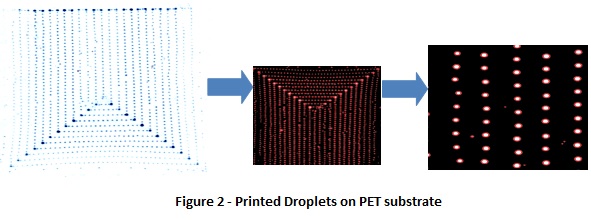
Major components of an EHD- inkjet printing system consist of a liquid supply system capable of discharging inks at desired flow rates to the tip of conducting nozzle. A high voltage amplifier to apply voltages across the conducting nozzle and the substrate and a positioning system to accurately position the substrate relative to the needle for controlled droplet deposition. The liquid jets are drawn and the droplets are formed under the influence of the external applied electric fields between the nozzle and substrate. Another notable advantage with such system is features at nanometre range can be fabricated using needle of relatively higher diameters. Extensive experiments were performed under several operating conditions to fabricate the droplets at nanometer scale. It is realized that features (droplets) with an average diameter of <100 µm can be fabricated using a needle diameter of 0.8 mm. One such kind of printed patterns of PDOTSS ink on a Polyethylene terephthalate (PET) substrate is presented in
Figure 2.
Multi-Material Deposition (MMD) System:
Multi-Material Deposition System is a novel manufacturing technology aimed for fabrication of near-net-shape functional metal parts directly from CAD model by laser cladding layer by layer as well as repairment of damaged parts. The importance of the project lies in Rapid Prototyping and Metal Additive Manufacturing (AM) industry. Figure 3 shows the developed system.
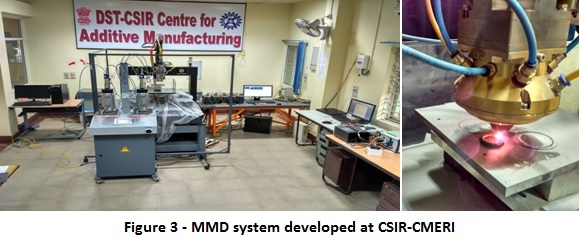 There are numerous challenging areas of the project. The integration of five major sub-system namely five axis motion system, powder feeder system, Laser system, feedback sensor and master control for satisfactory operation of MMD system. The challenging area in the control of MMD system lies in the closed loop control for the melt pool temperature, powder flow rate and layer deposition height. Adaptive process control system is required for the maintaining surface finish, product quality etc. of the deposited contour. The contributions to the project were made in several grounds. The conversion of CAD sliced CNC program to the macro program of the PLC for direct motion planning of CAD profile to be deposited is completed. The offline as well as online motion trajectory for the deposition of part was viewed in the 3D graphs in LABVIEW. Dynamic modeling and study of complete MMD system as a single plant (or lumped process) is carried out. The Laser based height sensor was used in standalone mode to measure the height of deposited clad. Some part fabrications were done completely based on some standard parameter selection.
There are numerous challenging areas of the project. The integration of five major sub-system namely five axis motion system, powder feeder system, Laser system, feedback sensor and master control for satisfactory operation of MMD system. The challenging area in the control of MMD system lies in the closed loop control for the melt pool temperature, powder flow rate and layer deposition height. Adaptive process control system is required for the maintaining surface finish, product quality etc. of the deposited contour. The contributions to the project were made in several grounds. The conversion of CAD sliced CNC program to the macro program of the PLC for direct motion planning of CAD profile to be deposited is completed. The offline as well as online motion trajectory for the deposition of part was viewed in the 3D graphs in LABVIEW. Dynamic modeling and study of complete MMD system as a single plant (or lumped process) is carried out. The Laser based height sensor was used in standalone mode to measure the height of deposited clad. Some part fabrications were done completely based on some standard parameter selection.
Nano-lubricant:
Over the last year, the main research focus was to develop functionalized particle lubricants for dry and lubricated contacts and friction and wear resistant Ni composite coatings. In the field of applied tribology, the necessity of reducing friction and wear and lubrication of any mechanical system is for efficient energy conservation. A strong attempt has been made over the years to provide enough lubrication to keep the contacting surfaces well separated from each other. The most effective way to reduce friction and wear is to separate the two sliding surfaces by means of a lubricating film (third body), such as a film of solid lubricant, oil, grease, or a coating. The use of traditional chemical additives for lubrication in the mechanical systems creates many problems of toxicity and pollution. Moreover the slow degradation of the additives hinder the tribological properties. Solid lubricants are used when liquid lubricants do not meet the advanced requirements of modern technology mostly in the boundary lubrication regime. These are very useful for the applications needed to meet critical operating conditions such as pressure, temperature, for which fluid lubricants are ineffective or undesirable.

Functionalized graphitic nanoparticles were prepared as the load bearing candidates for efficient lubrication of dry and oil/water lubricated mechanical contact. The functionalized graphitic particles were analyzed by UV-Vis, FTIR, Raman spectroscopy, XRD, DSC, SEM, TEM, contact angle for their structural and physico-chemical evaluation and confirmed successful functionalization of graphite particles. The frictional characteristics of the particle suspensions in oil/water medium were investigated and compared with the frictional behaviour of the particles in dry condition. The experimental data specify the prospect of obtaining good tribological property with functionalized nanoparticles where such particles may be made useful by suitable functionalization as per the tribological demands
Composite Coatings: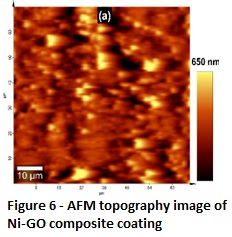
![FE-SEM images of [a] Ni & [b] Ni-GO composite coating](/sites/default/files/FE-SEM.jpg)
Coatings and thin films are applied to structural bulk materials in order to improve the desired properties of the surface, such as wear resistance, friction, corrosion resistance and others, yet keeping the bulk properties of the material unchanged. Pulsed electrodeposition (PED) is a reliable concept for deposition of cost-efficient, versatile, and reliable large-scale industrial production of high aspect materials. Electroless Ni coatings have also been extensively applied in numerous fields because of their excellent quality, uniform deposition, excellent wear and corrosion resistance, good weldability, and electrical conductivity. Electroless nickel plating improves corrosion resistance, increases the surface hardness of the material, provides a uniform and dense coating, and, in many cases, maintains the same surface finish the material had before plating. Low friction nanostructured coatings consisting of a hard transition metal carbide or nitride in combination with a solid lubricant, such as diamond-like carbon (DLC), MoS2, WS2 and others combine high hardness with low friction. They are applied in a variety of bearings and sliding parts operating without liquid lubricants, which is an important advantage particularly in a hostile environment, and when the movable parts have to stop and go very frequently.
Nickel-Graphene oxide (GO) composite coatings were successfully prepared on the steel substrate by PED method. The morphology, compositional, and tribological properties were investigated. FE-SEM and AFM microscopic studies shows the presence of GO particles intercalated in the Ni matrix in the composite coating.XRD, EDS, water contact angle and Raman spectra also corroborated the above finding. The tribological studies shows that the trapped GO positively affected the friction and wear properties of the coating. Compared to the pristine Ni coating, the insertion of GO into Ni matrix reduced the coefficient of friction and wear depth of the coating substantially.
Graphene oxide: Since the discovery of Graphene, most research is carried on its production. Researchers are exploring various ways for its production in a large scale to make it suitable for the industrial usage and energy storage applications. It has gained considerable attention in the scientific community because of its unique properties like high strength, high thermal conductivity and many desirable properties. Extensive work is being carried at CSIR – CMERI to produce the graphene oxide on large scale basis. This opens a window for using graphene oxide in several applications like high energy density supercapacitor for energy storage applications, graphene lubricants, sensors, graphene/polymer composites and surface coating of steel using graphene. One of the notable achievements is the development of rechargeable super capacitor prototype using graphene. The prototype developed is depicted in
Figure 7
and the same was demonstrated at IISF, New Delhi
. This graphene based supercapacitor has energy density of 113 Wh kg
-1 and retention in specific capacitance is >80% after 10,000 charge-discharge cycles.

Figure 8 presents another notable achievement which is the development of flexible graphene electrode. Capacitive performance such as specific capacitance and 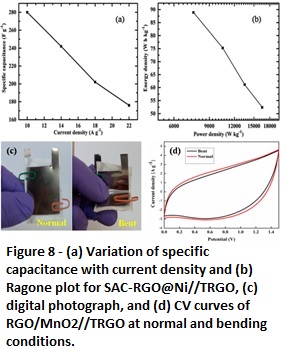 charging-discharging efficiency remain unchanged even after 100 times of bending the electrode.
charging-discharging efficiency remain unchanged even after 100 times of bending the electrode.
Apart from this, the group is exploring extensively several other possible applications where the use of graphene oxide can significantly enhance the performance of systems. A few applications of such areas are the use of graphene based aqueous lubricants in manufacturing industries, use of surface modified graphene for coating applications. The group also focuses on the areas of surface modification of reduced graphene oxide, bio-reduction of graphene oxide, one-step electrochemical exfoliation of graphite to functionalized graphene sheets and graphene/metal oxide composite supercapacitor.
Research Head:
Real name:
Harish Hirani (1460)
Email
- Plaintext email only
- No
History
- Member for
- 9 years 2 months
 Director CSIR-CMERI Inaugurates Indigenous Surgical Artery Forceps Manufacturing Setup
Director CSIR-CMERI Inaugurates Indigenous Surgical Artery Forceps Manufacturing Setup  CSIR-CMERI Leads Chhattisgarh’s Green Farming Revolution with the PRIMA ET 11 e-Tractor
CSIR-CMERI Leads Chhattisgarh’s Green Farming Revolution with the PRIMA ET 11 e-Tractor  Hindi Month 2025: Closing Ceremony & Prize Distribution Celebrated with Enthusiasm and Pride
Hindi Month 2025: Closing Ceremony & Prize Distribution Celebrated with Enthusiasm and Pride  Together for a Clean Green and Sustainable Environment: #SwachhtaHiSeva 2025
Together for a Clean Green and Sustainable Environment: #SwachhtaHiSeva 2025  Charting New Paths: Unlocking Potential Through Civil Works Skill Development at CSIR-CMERI
Charting New Paths: Unlocking Potential Through Civil Works Skill Development at CSIR-CMERI 


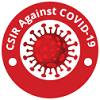

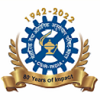
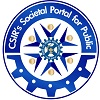
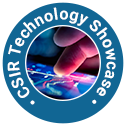


 There are numerous challenging areas of the project. The integration of five major sub-system namely five axis motion system, powder feeder system, Laser system, feedback sensor and master control for satisfactory operation of MMD system. The challenging area in the control of MMD system lies in the closed loop control for the melt pool temperature, powder flow rate and layer deposition height. Adaptive process control system is required for the maintaining surface finish, product quality etc. of the deposited contour. The contributions to the project were made in several grounds. The conversion of CAD sliced CNC program to the macro program of the PLC for direct motion planning of CAD profile to be deposited is completed. The offline as well as online motion trajectory for the deposition of part was viewed in the 3D graphs in LABVIEW. Dynamic modeling and study of complete MMD system as a single plant (or lumped process) is carried out. The Laser based height sensor was used in standalone mode to measure the height of deposited clad. Some part fabrications were done completely based on some standard parameter selection.
There are numerous challenging areas of the project. The integration of five major sub-system namely five axis motion system, powder feeder system, Laser system, feedback sensor and master control for satisfactory operation of MMD system. The challenging area in the control of MMD system lies in the closed loop control for the melt pool temperature, powder flow rate and layer deposition height. Adaptive process control system is required for the maintaining surface finish, product quality etc. of the deposited contour. The contributions to the project were made in several grounds. The conversion of CAD sliced CNC program to the macro program of the PLC for direct motion planning of CAD profile to be deposited is completed. The offline as well as online motion trajectory for the deposition of part was viewed in the 3D graphs in LABVIEW. Dynamic modeling and study of complete MMD system as a single plant (or lumped process) is carried out. The Laser based height sensor was used in standalone mode to measure the height of deposited clad. Some part fabrications were done completely based on some standard parameter selection.

![FE-SEM images of [a] Ni & [b] Ni-GO composite coating](/sites/default/files/FE-SEM.jpg)

 charging-discharging efficiency remain unchanged even after 100 times of bending the electrode.
charging-discharging efficiency remain unchanged even after 100 times of bending the electrode.